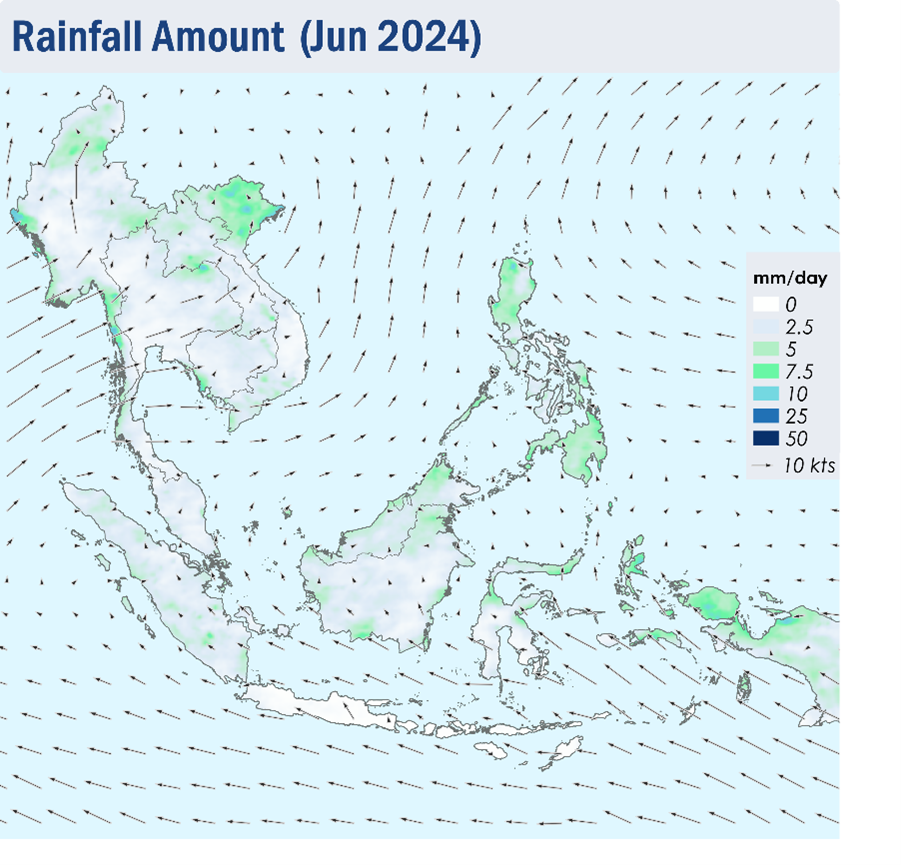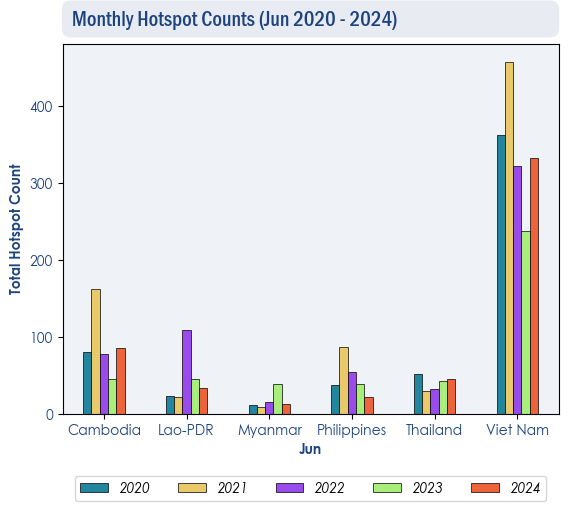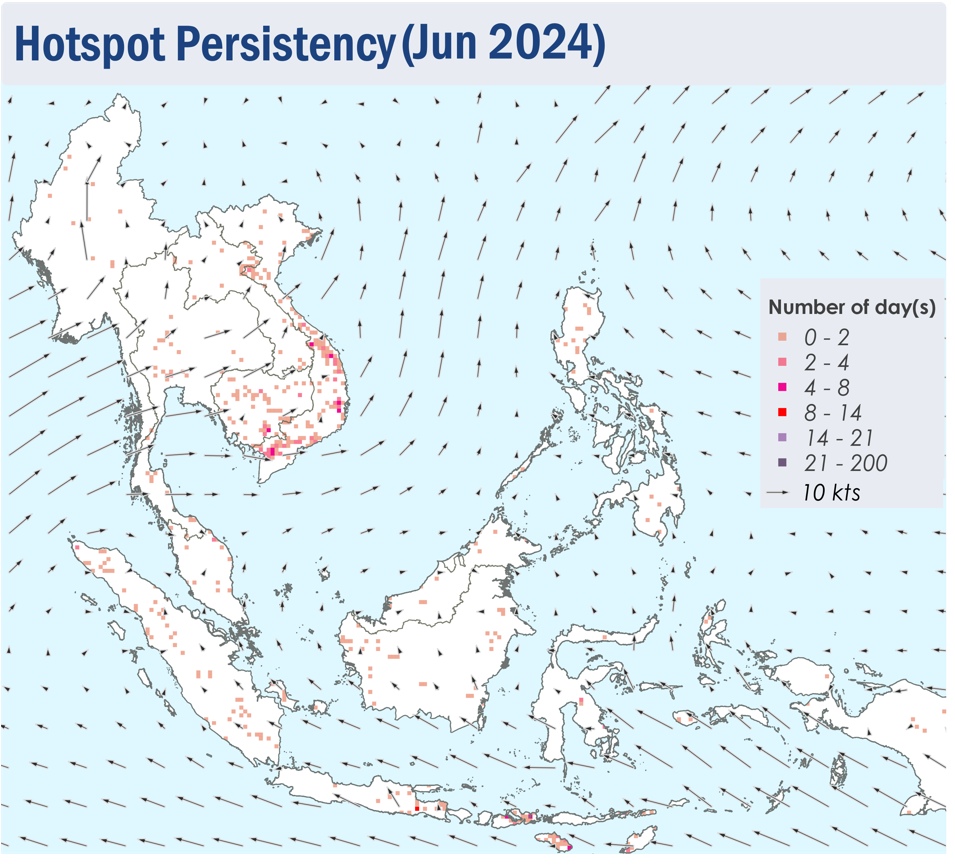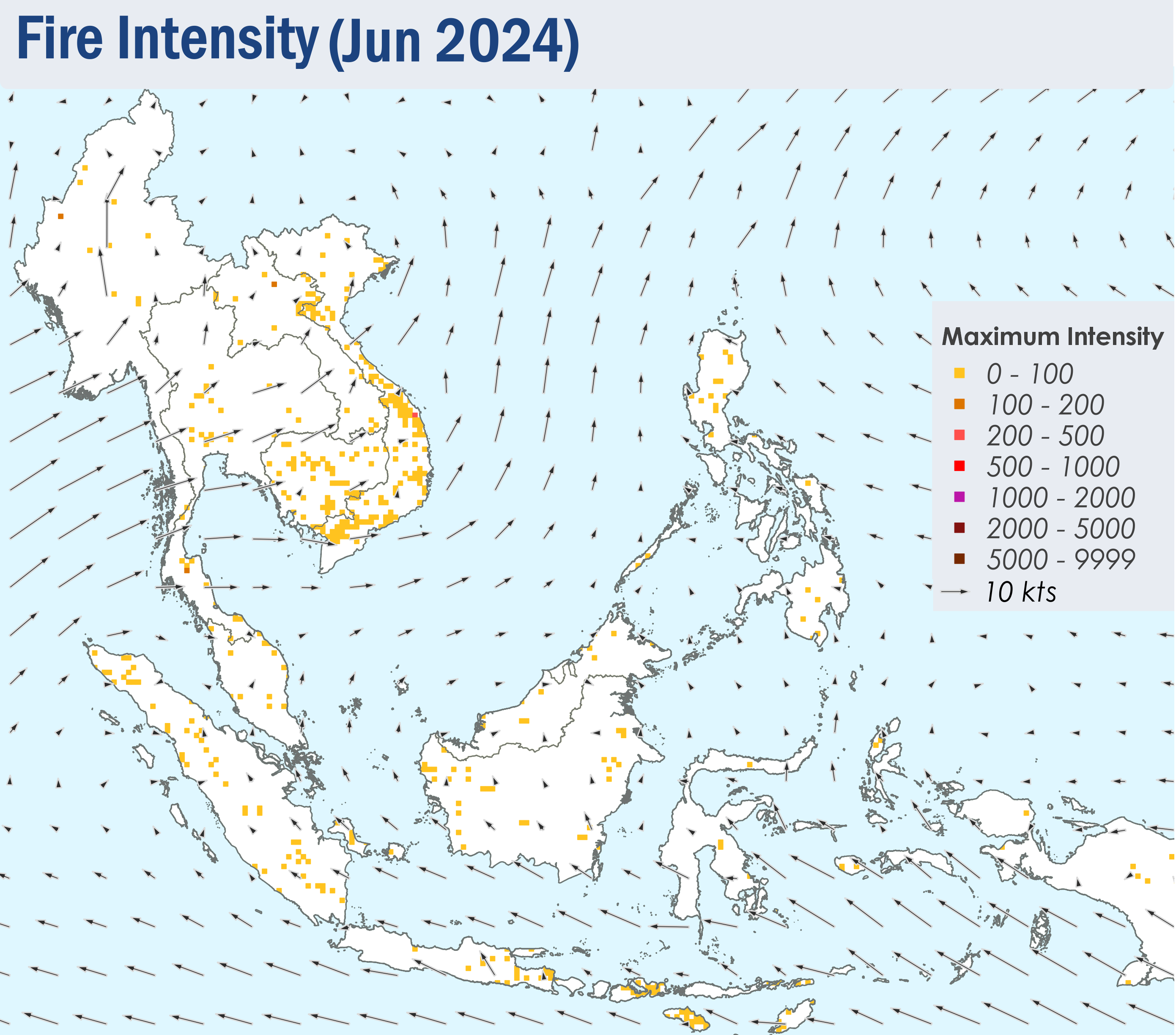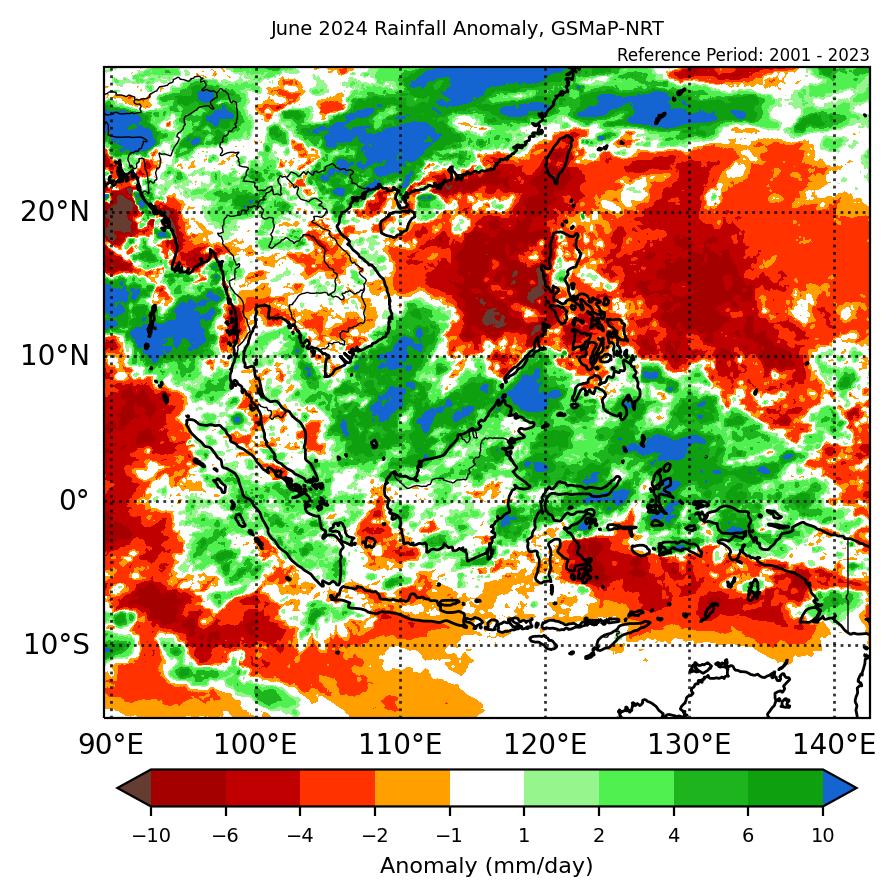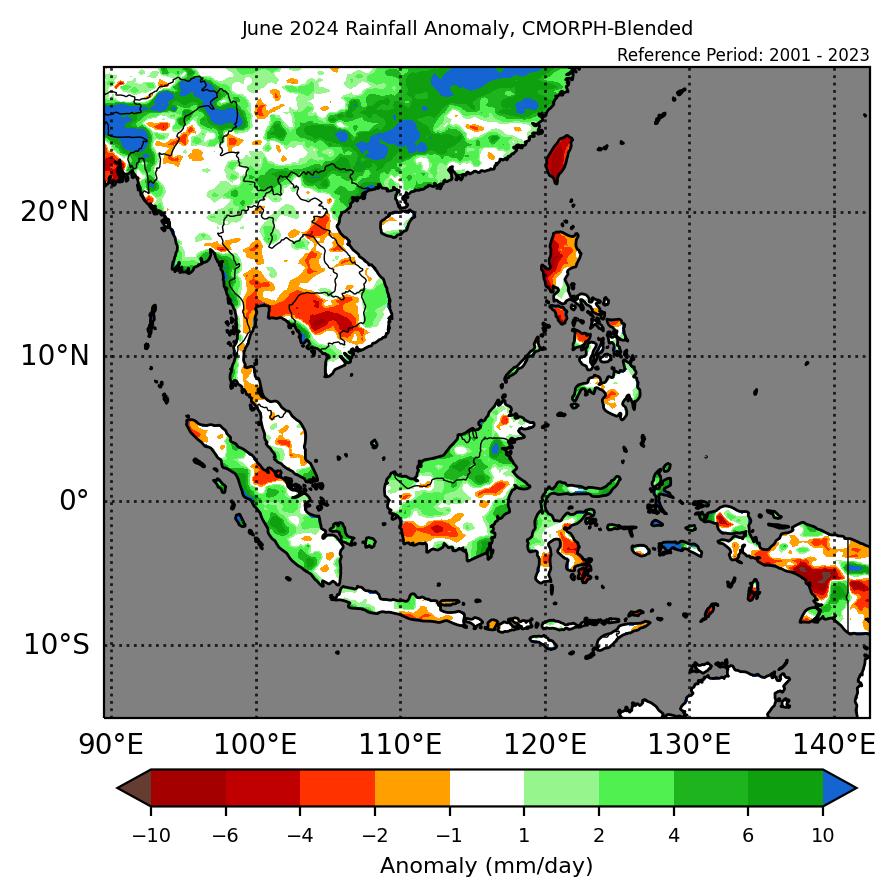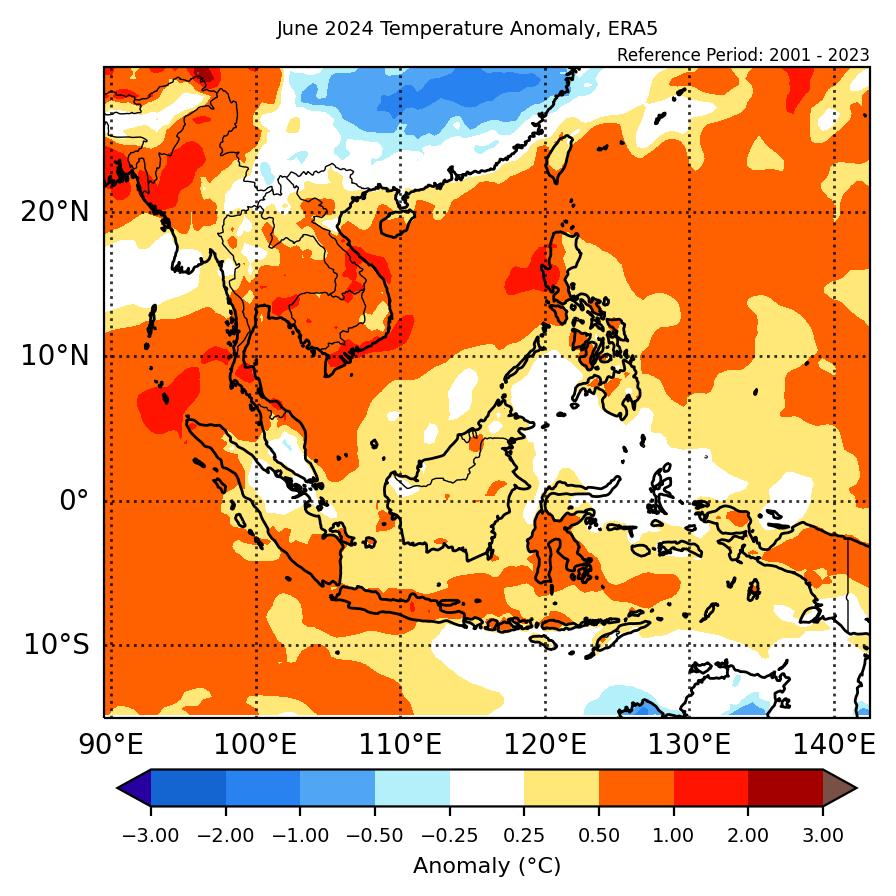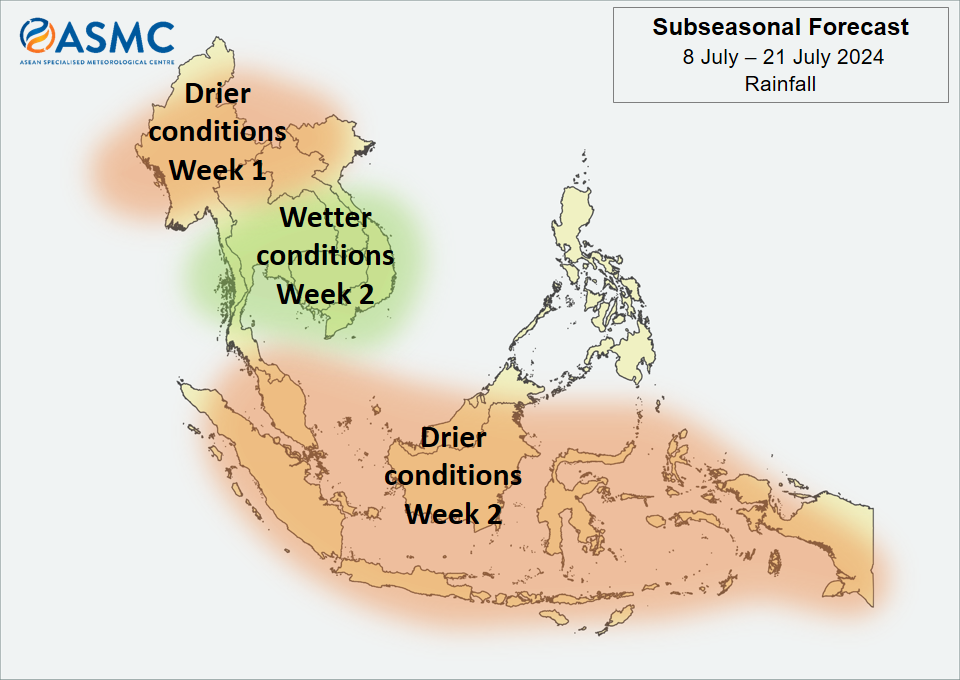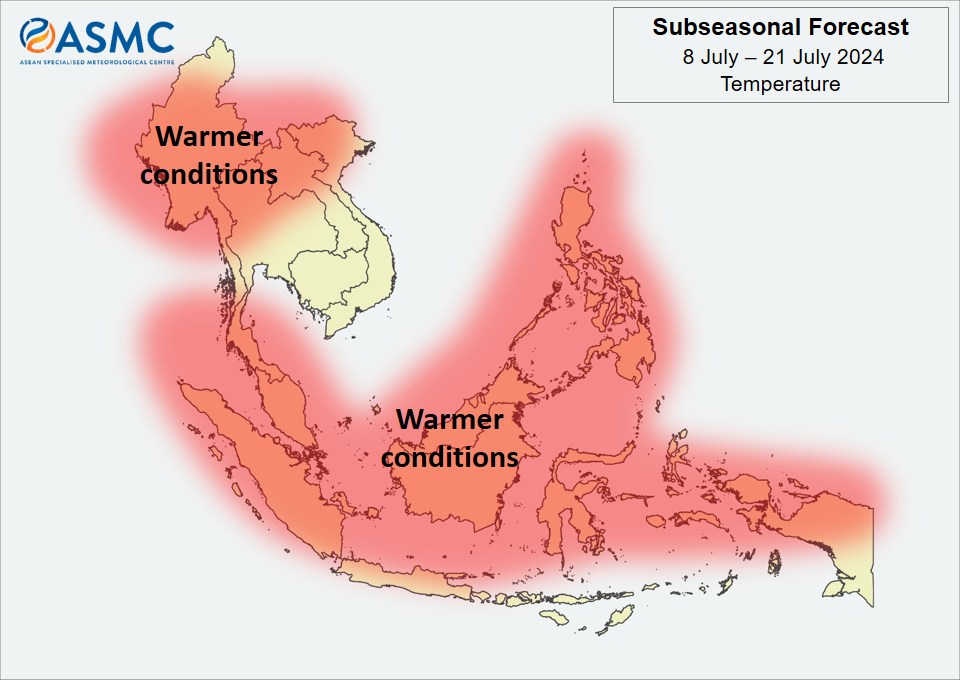MEDIA RELEASE
START OF DRY SEASON FOR THE SOUTHERN ASEAN REGION
Risk of hotspot and smoke haze development, despite possible La Niña conditions
Singapore, 17 July 2024 – Many parts of the southern ASEAN region[1] have started to experience persistent drier weather conditions in recent days. This is due to a strengthening of the prevailing Southwest Monsoon, which causes the monsoon rainband to move further north of the Equator, away from the region. The ASEAN Specialised Meteorological Centre (ASMC) has hence issued Alert Level 1 for the southern ASEAN region on 17 July 2024, indicating the start of the dry season that is expected to last till September 2024.
2 With the drier conditions, there has been an increase in hotspot activity in the southern ASEAN region in the past few days. A total of 33 and 44 hotspots were detected on 15 July 2024 and 16 July 2024 respectively. Localised smoke plumes were observed to emanate from a few hotspots in Sumatra on some days.
3 The conditions in the tropical Pacific Ocean are currently neutral (neither El Niño nor La Niña2), with a possibility of La Niña conditions developing in the second half of the year. Based on the latest climate outlook, ASMC expects above-normal rainfall over most parts of the southern ASEAN region in the coming months. However, there is still a risk of hotspot and smoke haze development in the fire-prone areas, particularly during drier periods. Early precautionary and mitigation measures are advised to prevent the occurrence of fires and transboundary haze in the region.
4 For regular and ad-hoc updates of the regional weather and smoke haze situation and early warnings, please visit the ASMC website at https://asmc.asean.org.
[1] The southern ASEAN region comprises Brunei Darussalam, Indonesia, Malaysia, Singapore and southern Thailand.
[2] La Niña conditions tend to bring wetter conditions to many parts of the southern ASEAN region.
– End –

